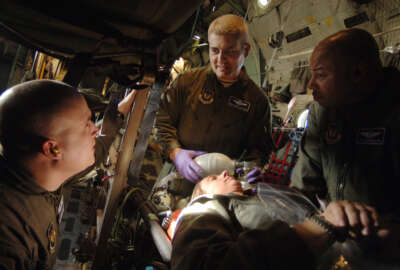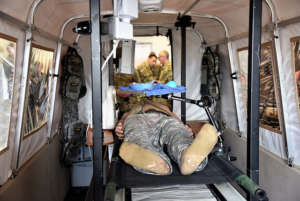
Army not excited about possibility of amputating medical research arm
The Army may lose its Medical Research and Materiel Command in the 2019 NDAA, and Army Secretary Mark Esper is not happy about it.
 The Army has a long history with medical research, but that may change soon and the service isn’t too excited about it.
The Army has a long history with medical research, but that may change soon and the service isn’t too excited about it.
Army Secretary Mark Esper said last week that a new requirement in the 2019 defense authorization law, which calls on the service to relinquish its Medical Research and Materiel Command and merge it into the Defense Health Agency, doesn’t excite him.
“My concern with that provision is it might not enable us to do what we need to do with readiness on the battlefield and training,” Esper said, during a Defense Writers Group breakfast with reporters in Washington. “My preference would be to keep that, the medical research, because I want to be thinking about what I need on the future battlefield. It’s a readiness issue for me.”
Esper said he may talk with Congress about the implications of the law or the possibility of changing it.
“I think it was a surprise to us that it found its way into the NDAA,” he said. “I think that’s one of the issues on the table we need to work through.”
The law states that by Sept. 30, 2022, DHA will establish a leader for Defense Health Agency Research and Development, which will be comprised of Army Medical Research and Materiel Command and other medical research organizations and activities in the armed forces.
The DHA R&D office will be in charge of coordinating defense health program research, development, test and evaluation. A second subordinate organization called DHA Public Health will take over Army Public Health Command, Navy-Marine Corps Public Health Command, Air Force public health programs and any other related defense health activities.
The law also asks for a report on the feasibility of establishing a DHA Education and Training, which would operate under DHA Public Health. DHA Education and Training would be led by the president of the Uniformed Services University of Health Sciences.
Congress also wants a report on the creation of a Defense Health Command, which would supersede DHA.
Latest Defense News
The 2019 defense appropriations bill gives the military about $1.7 billion through 2020 for medical research and development. A total of $761.5 million of those funds are obligated for Army Medical Research and Materiel Command alone.
Read more of the DoD Personnel Notebook.
Copyright © 2025 Federal News Network. All rights reserved. This website is not intended for users located within the European Economic Area.
Scott Maucione is a defense reporter for Federal News Network and reports on human capital, workforce and the Defense Department at-large.
Follow @smaucioneWFED





